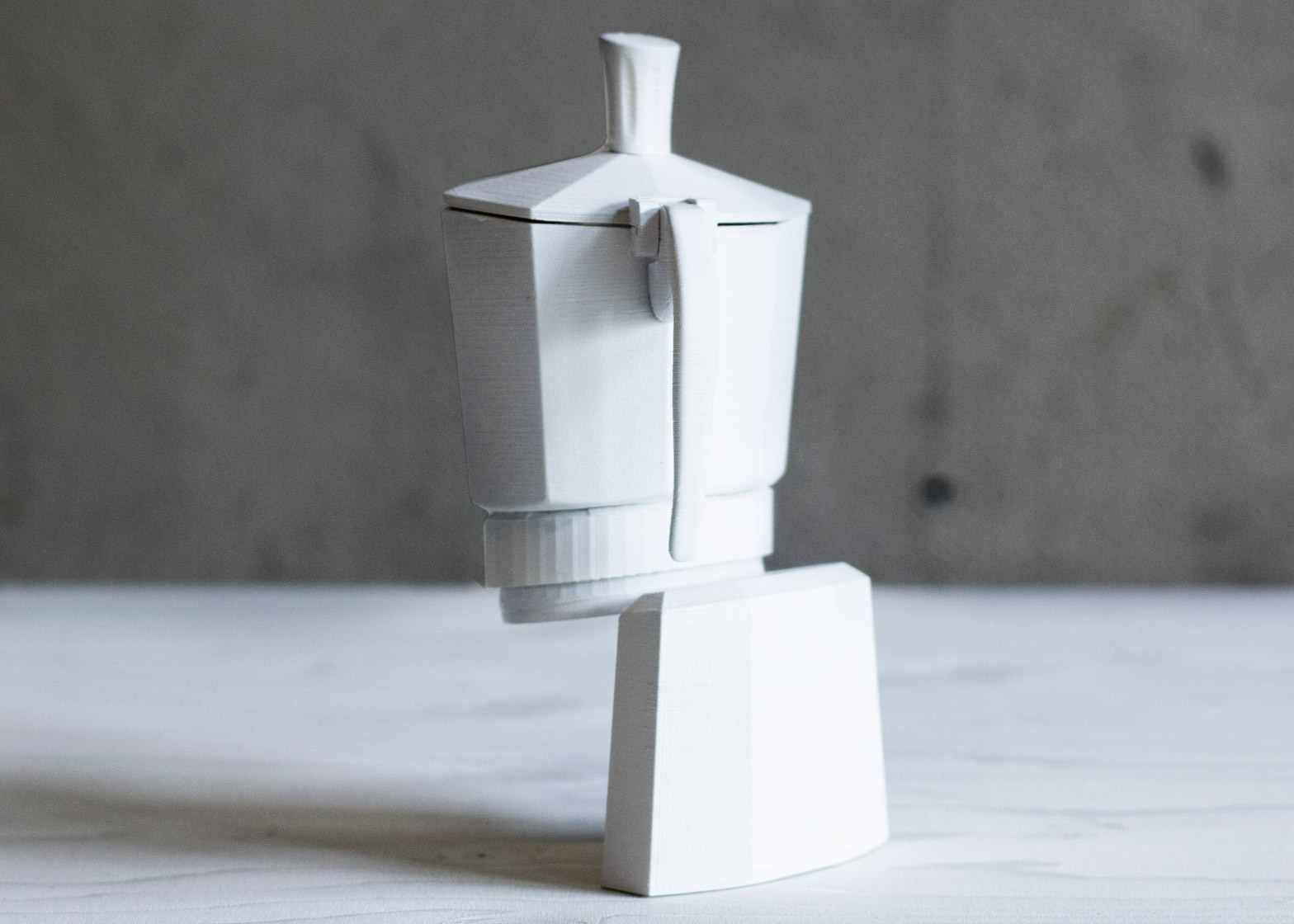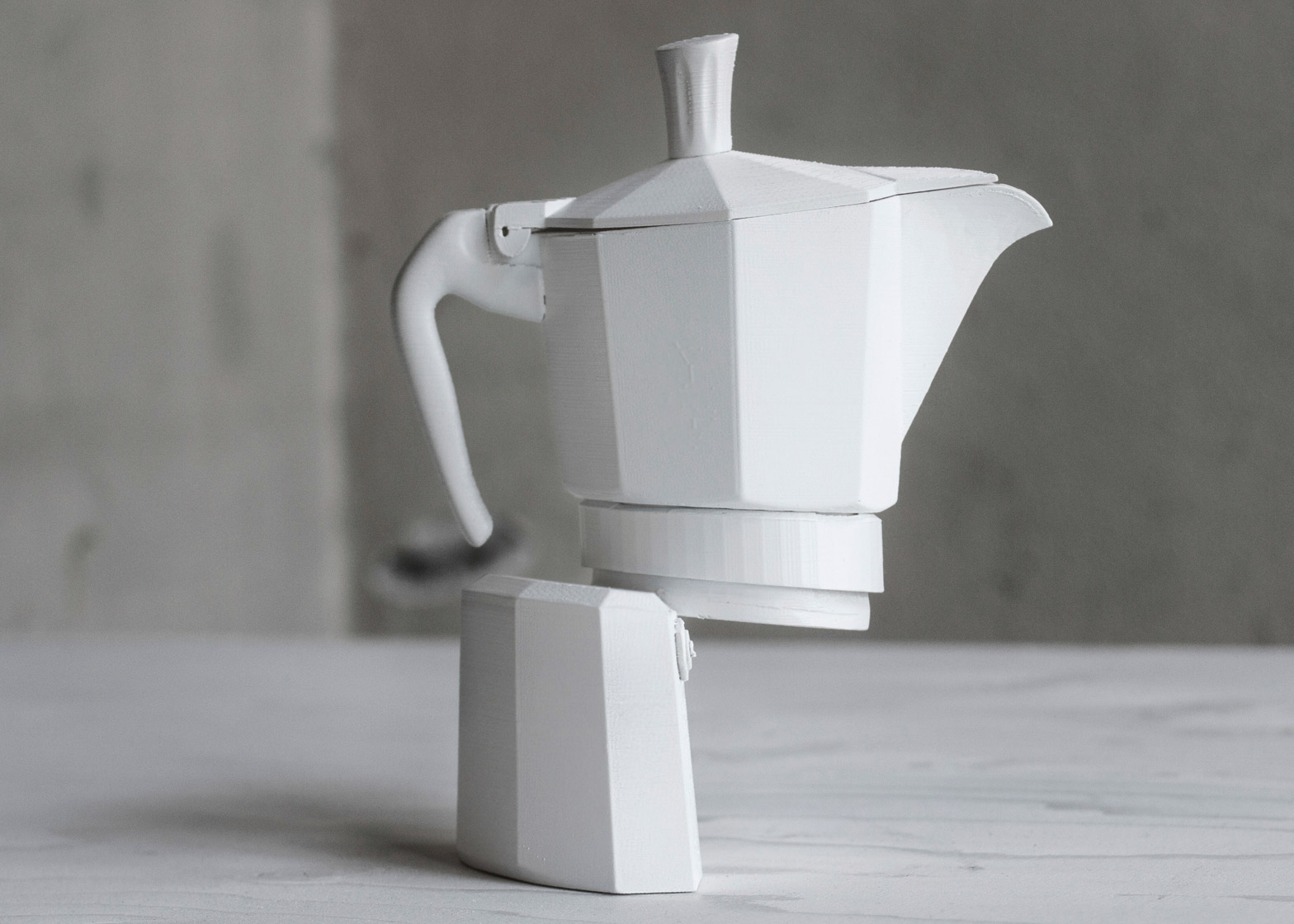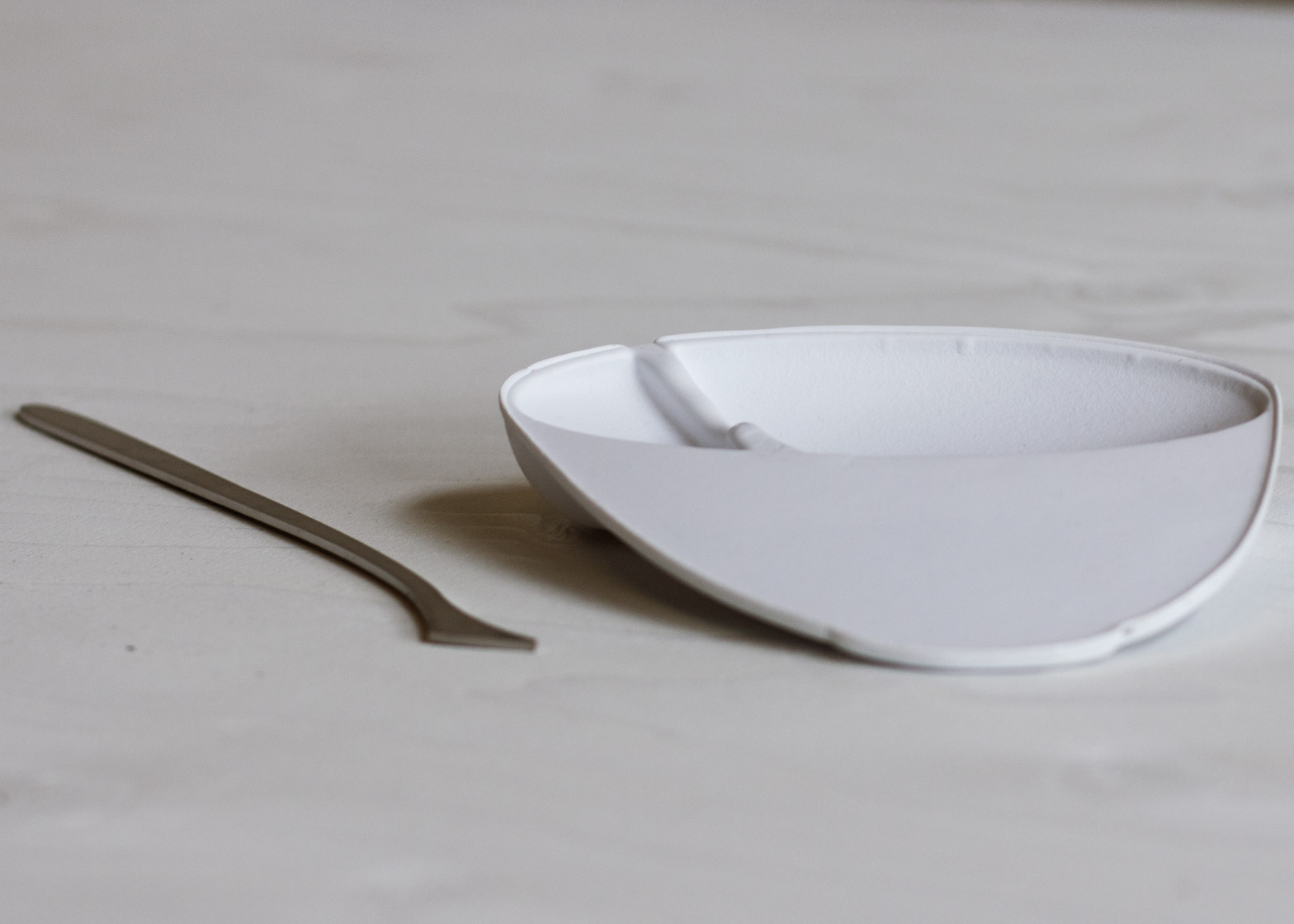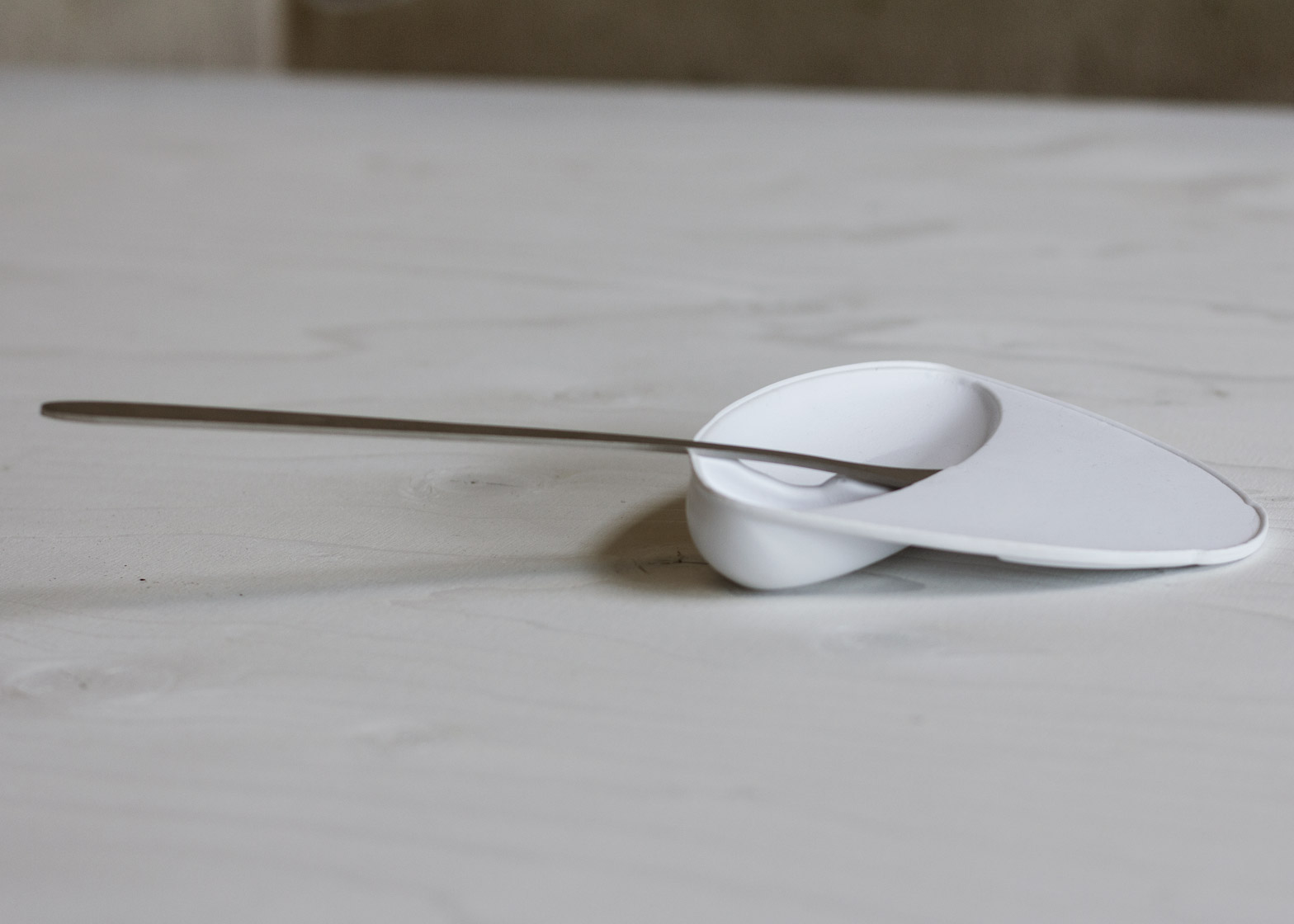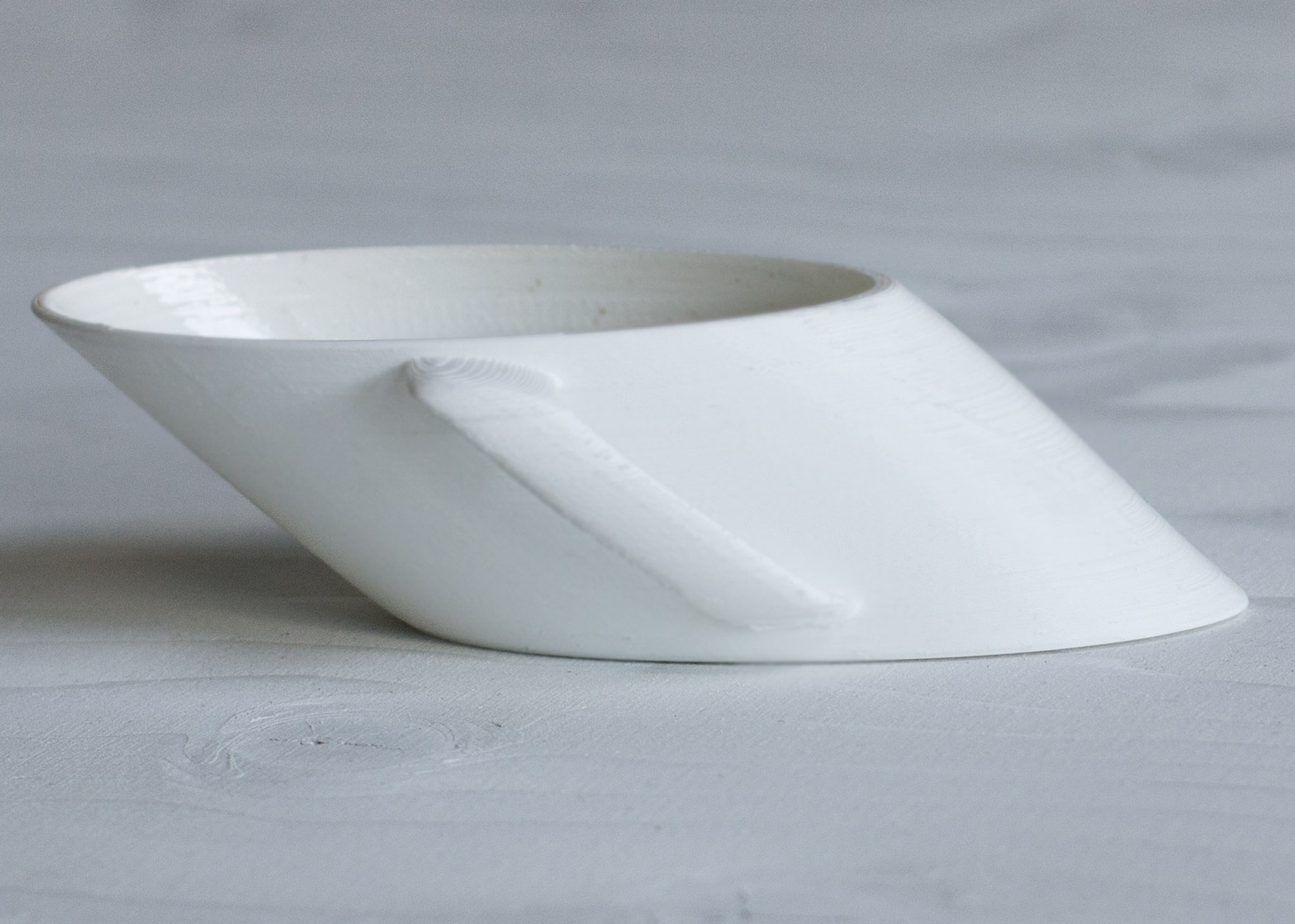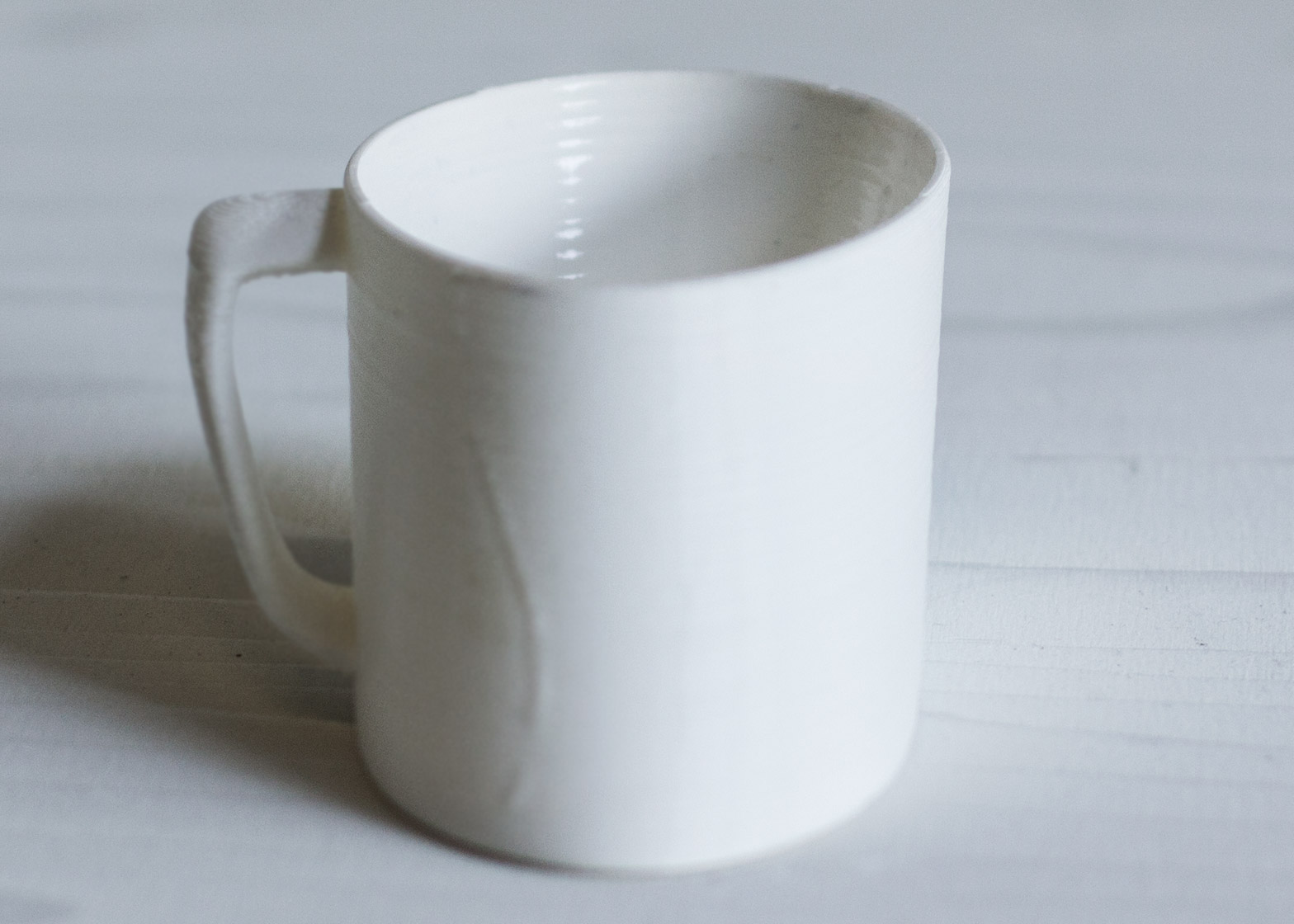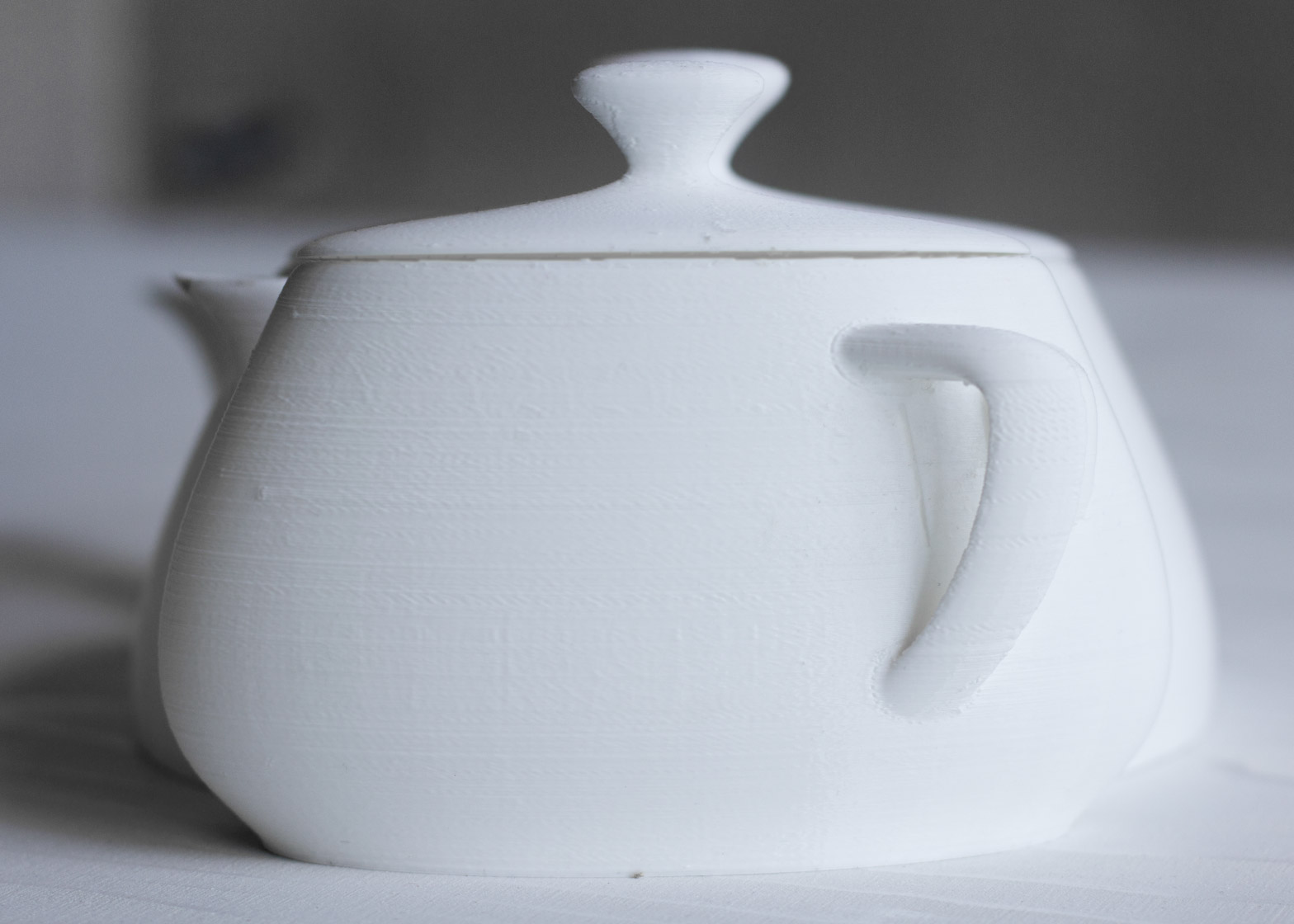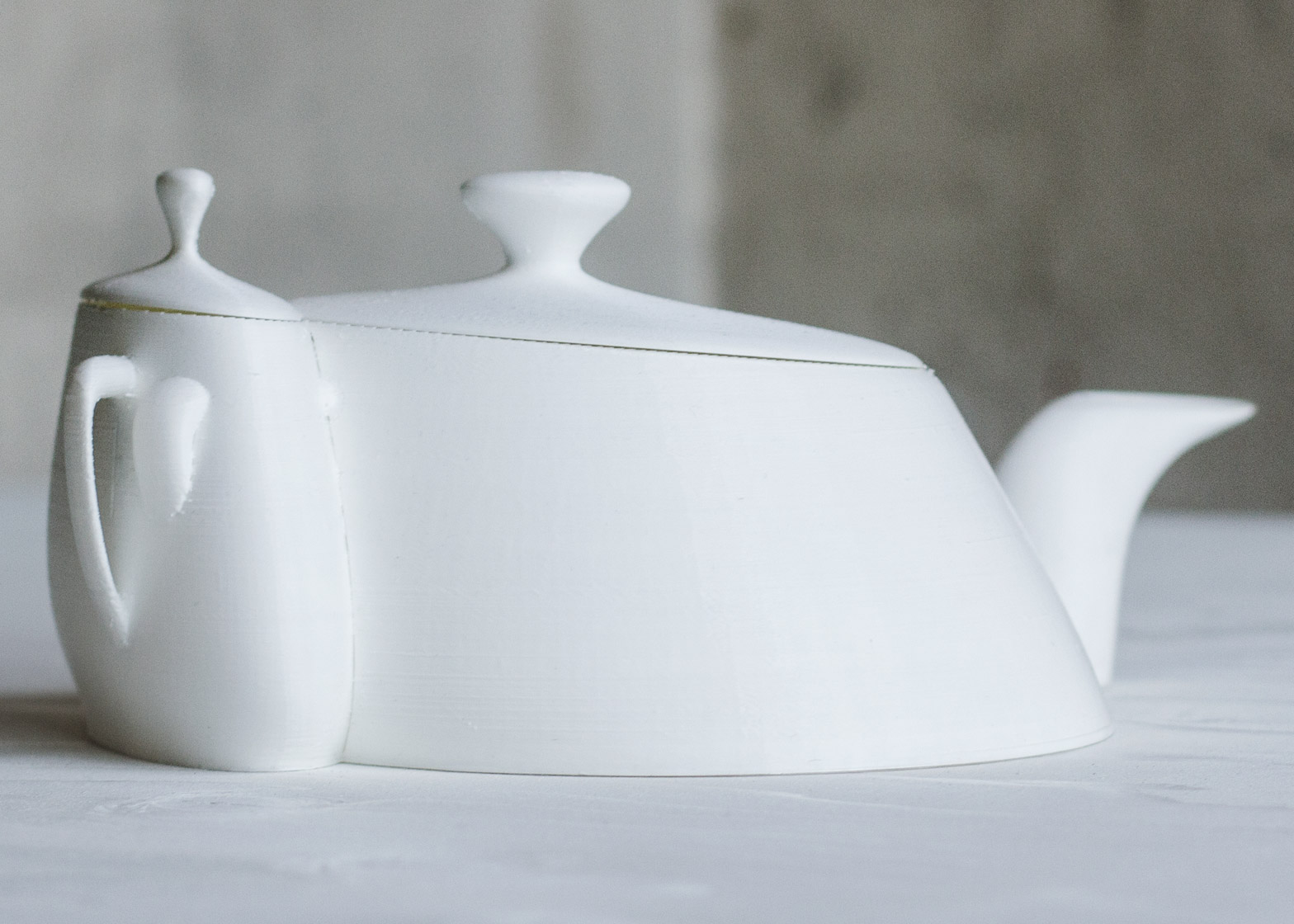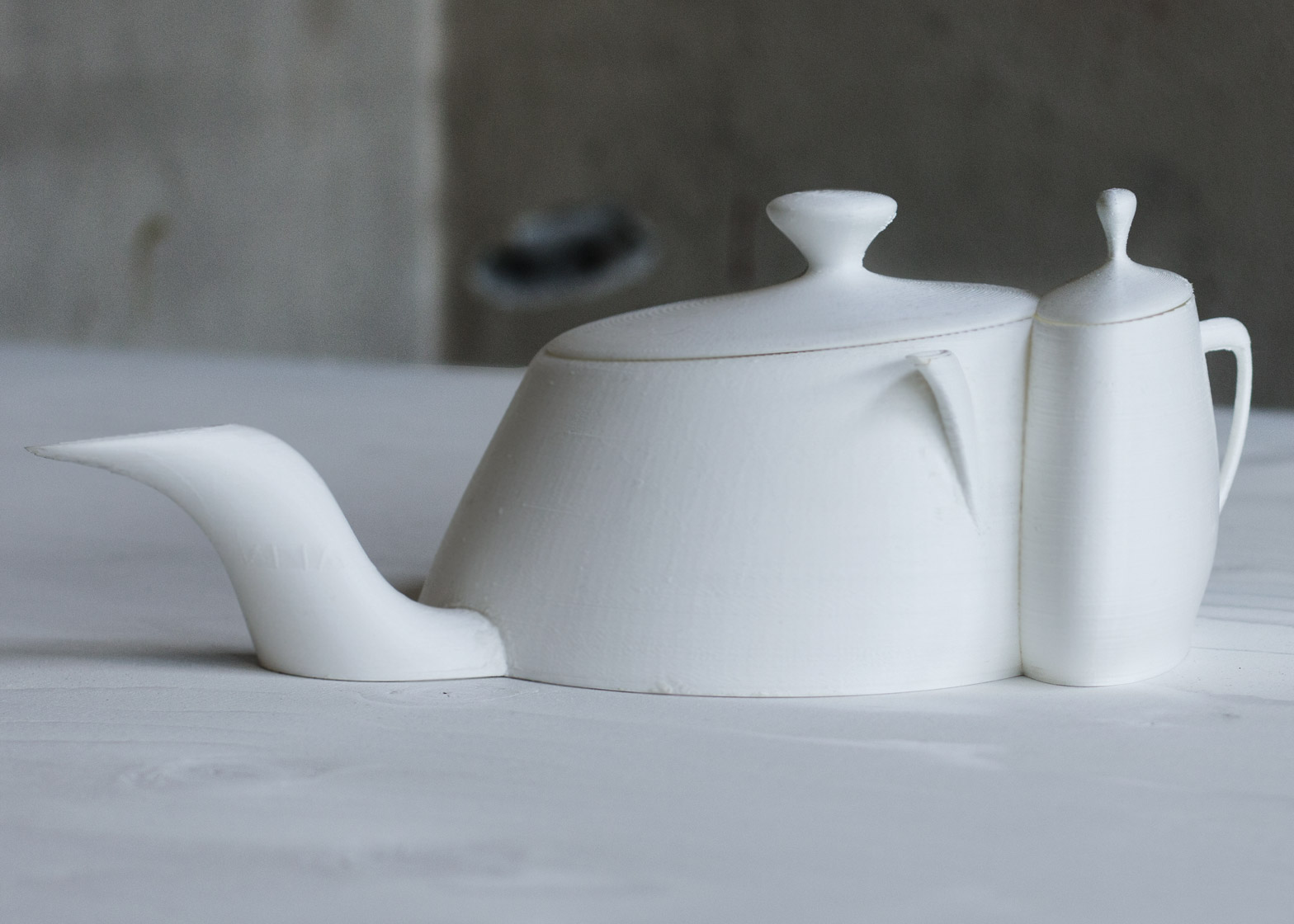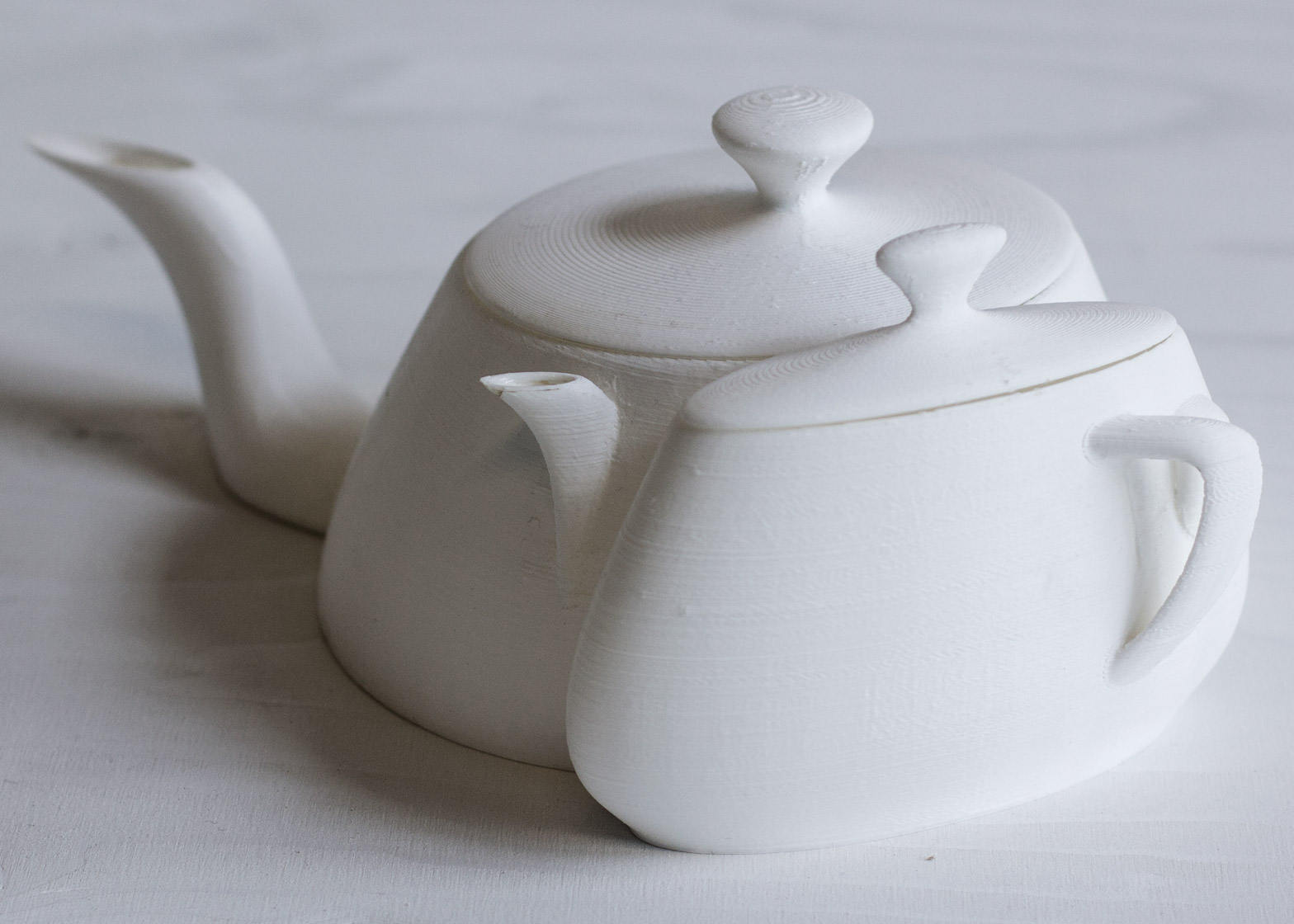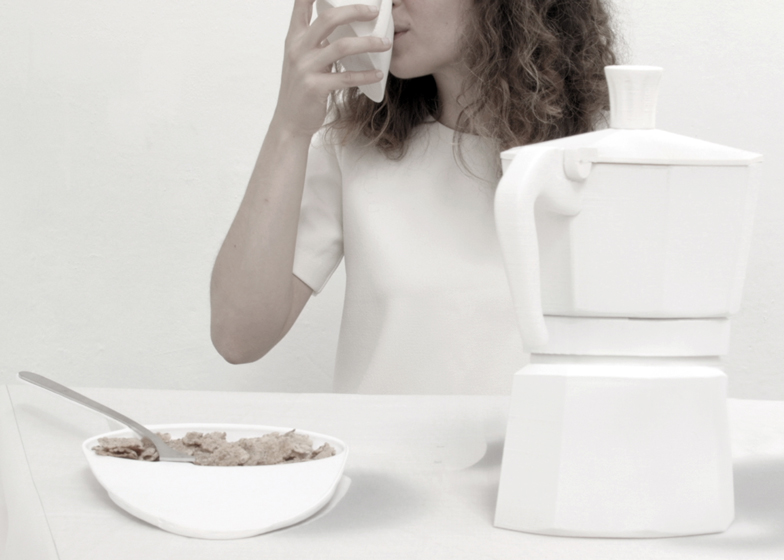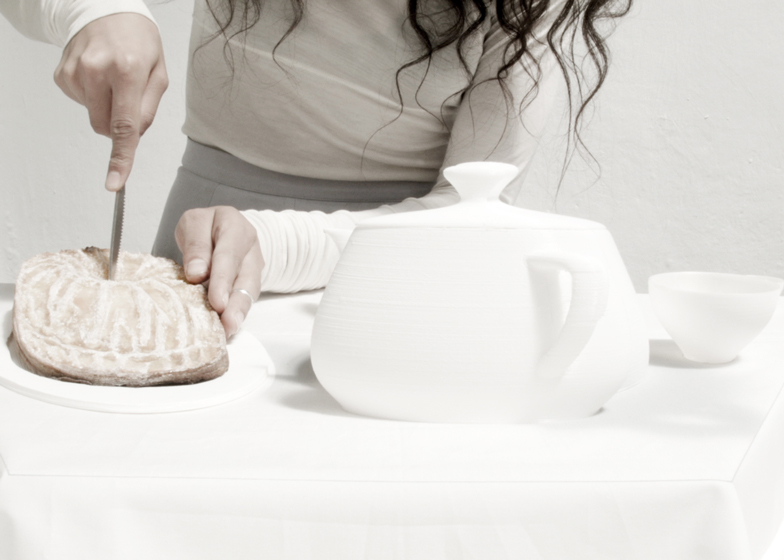Dutch Design Week 2015: Design Academy Eindhoven graduate Louisa Zahareas' set of deformed tableware only appears normal when seen on screen (+ slideshow).
Zahareas designed the ceramics to recreate the ritual of a family meal, as seen through a computer camera via internet communication apps such as Skype or FaceTime.
"I started with an image of a set table and then I distorted everything according to the perspective of how my webcam sees the world," she told Dezeen.
"This led to this new kind of surrealistic, Salvador Dali-like meal, which is inspired by our relationship to our screens."
The objects use forced perspective to appear normal when arranged in front of a laptop webcam, but are less conventional when seen up close.
The top half of a coffee pot appears dislocated from its base, while two teapots seem to be merged into one.
Cups slant backwards, while bowls are shallow and almost unusable. A set of six flat eating utensils come in contrasting sizes, appearing either dramatically stretched or shortened.
Zahareas designed prototypes while looking at them through her phone camera. Complex shapes, like the teapot, had to be mathematically calculated.
The designer collaborated with Dianne Hansford, an expert in computational geometry and with experience in 3D geometric anamorphosis – the creation of distorted imagery that must be seen from a particular perspective to appear correct.
"The original formula was inspired by the mathematics of 2D anamorphosis in painting," said Zahareas.
"An example of the use of this technique is the 1533 painting The Ambassadors, by Holbein," she added. "So in fact it is a very old technique, but it had to be re-designed to work in 3D."
The pieces were created as a response to the growing use of digital communication tools like Skype and FaceTime.
"The idea originated from my personal experience with my family," said Zahareas. "I now experience my family primarily through the prism of my computer screen rather than in real, physical space."
The designer created prototypes of the objects using 3D printing before making final versions in porcelain.
"I see these objects as props, rather than products that are meant to be used," she said. "I imagine the space in front of our computer or smartphone cameras as a theatre stage, where we perform."
"So these objects become interesting for me when performed," she added. "They point to new kinds of interactions, sometimes funny and other times completely absurd."
The Screen Mutations ceramics were shown at the Design Academy Eindhoven graduate show during Dutch Design Week 2015, which took place from 17 to 25 October.
Also presented at the exhibition were a virtual reality mall, alternative golfing garments, and a nomadic hotel concept.

